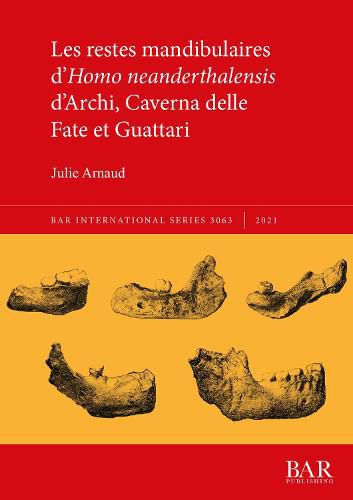Readings Newsletter
Become a Readings Member to make your shopping experience even easier.
Sign in or sign up for free!
You’re not far away from qualifying for FREE standard shipping within Australia
You’ve qualified for FREE standard shipping within Australia
The cart is loading…






This title is printed to order. This book may have been self-published. If so, we cannot guarantee the quality of the content. In the main most books will have gone through the editing process however some may not. We therefore suggest that you be aware of this before ordering this book. If in doubt check either the author or publisher’s details as we are unable to accept any returns unless they are faulty. Please contact us if you have any questions.
Les donnees actuelles sur le peuplement de la peninsule italienne suggerent un retard dans l'acquisition des autapomorphies neandertaliennes, lie a leur isolement geographique. En Europe, les premiers traits derives neandertaliens apparaissent il y a environ 450 ka alors qu'en Italie les specimens presentent une morphologie archaique par la presence de plesiomorphies et les premieres autapomorphies seront individualisees qu'a partir du MIS 9 (350 ka ca.). Ce livre propose une revision des restes fossiles mandibulaires italiens attribues a Homo neanderthalensis : Guattari 2, Guattari 3, Fate 2, Fate 3 et Archi 1, afin de les replacer dans le contexte evolutif europeen a travers une analyse morphologique et morphometrique. De plus, la presence de specimens immatures amene a l'analyse de la croissance mandibulaire, sujet qui divise la communaute scientifique : certains auteurs definissent l'ontogenese neandertalienne similaire a celle de l'homme moderne et d'autres mettent en evidence des trajectoires evolutives divergentes basees sur une precocite de maturation chez les Neandertaliens.
This book proposes a revision of Italian mandibular fossil remains attributed to Homo neanderthalensis - Guattari 2, Guattari 3, Fate 2, Fate 3 and Archi 1 - in order to place them in the European evolutionary context through a morphological and a morphometrical study.
$9.00 standard shipping within Australia
FREE standard shipping within Australia for orders over $100.00
Express & International shipping calculated at checkout
This title is printed to order. This book may have been self-published. If so, we cannot guarantee the quality of the content. In the main most books will have gone through the editing process however some may not. We therefore suggest that you be aware of this before ordering this book. If in doubt check either the author or publisher’s details as we are unable to accept any returns unless they are faulty. Please contact us if you have any questions.
Les donnees actuelles sur le peuplement de la peninsule italienne suggerent un retard dans l'acquisition des autapomorphies neandertaliennes, lie a leur isolement geographique. En Europe, les premiers traits derives neandertaliens apparaissent il y a environ 450 ka alors qu'en Italie les specimens presentent une morphologie archaique par la presence de plesiomorphies et les premieres autapomorphies seront individualisees qu'a partir du MIS 9 (350 ka ca.). Ce livre propose une revision des restes fossiles mandibulaires italiens attribues a Homo neanderthalensis : Guattari 2, Guattari 3, Fate 2, Fate 3 et Archi 1, afin de les replacer dans le contexte evolutif europeen a travers une analyse morphologique et morphometrique. De plus, la presence de specimens immatures amene a l'analyse de la croissance mandibulaire, sujet qui divise la communaute scientifique : certains auteurs definissent l'ontogenese neandertalienne similaire a celle de l'homme moderne et d'autres mettent en evidence des trajectoires evolutives divergentes basees sur une precocite de maturation chez les Neandertaliens.
This book proposes a revision of Italian mandibular fossil remains attributed to Homo neanderthalensis - Guattari 2, Guattari 3, Fate 2, Fate 3 and Archi 1 - in order to place them in the European evolutionary context through a morphological and a morphometrical study.